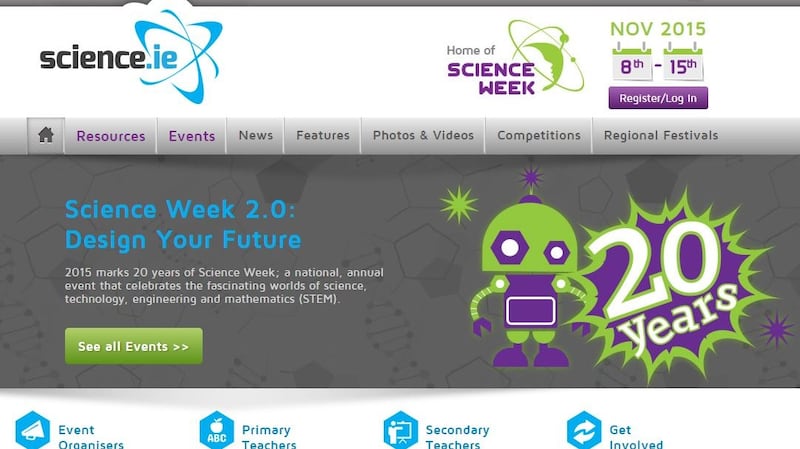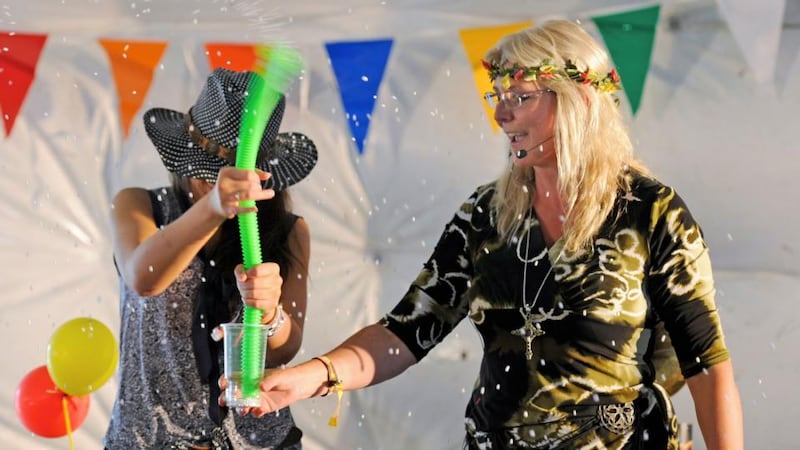Dragons serve a very useful role in explaining physics and chemistry, and although you may be hard pressed to find one, students can still learn about the science behind them.
Science presenter Sue McGrath, better known as “Scientific Sue”, has developed a highly entertaining show explaining how dragons work.
The presentation explains their breath, which one minute can be fiery and the next a cold fog, and it explains the process of dragon digestion that delivers these gases.


Scientific Sue is touring Ireland and presenting shows all week as part of Science Week 2015, which continues until the weekend.
"I have based a lot of the presentation on the book How to Train Your Dragon by Cressida Cowell," she explained.
This places the dragon “Norbert” at the centre of the show, but the back story is all about science, she said.
Gas density
She talks about gases and their density that makes them either float up or sink to the floor, and explains how enzymes in saliva initiate digestion.
She also covers wing shape and flight, and how an aerofoil works to enable flight - either for planes or dragons.
There is a lot of audience participation, with the crowd being turned into Vikings as soon as the show gets under way.
“I encourage them to stamp the floor when they like something,” she said. “It is a very noisy and visual show.”
How a dragon manages to breath fire is all based on their digestion, the audience hears, and she shows how this works.
Scientific Sue uses a flask to mimic a stomach, and adds caustic soda and metal to generate hydrogen gas.
Dramatic flash
This bubbles up through a funnel full of washing up liquid and is then trapped. The bubbles of gas can then be lit, burning off in a dramatic flash.
No harm is done to the student who helps with this but the process provides a useful explanation for dragon breath.
Scientific Sue is director of Science2Life, an outreach educational provider dedicated to the communication of science.
A graduate of Queen's University Belfast, she holds a Guinness record for the largest practical science class ever held, with 1,339 students involved.
Her shows are free of charge, but should be booked.
On Thursday she has shows at libraries in Ballyfermot and in Dún Laoghaire. She is in Castlebar on Sunday and all next week will be at the Galway Science Fair.
Book a place at scienceweek.ie
Daily Puzzle
Nasa was considering sending canaries into space to study them under zero gravity. The project was scrapped when someone realised that in spite of having sufficient water supplies, they could die of dehydration within a few hours. Why?
Answer
Birds, unlike humans, need gravity to swallow. Humans can swallow even while hanging upside down.
What Science Week events to see on Thursday
Flames, Flashes and Frozen Flowers
Putting the wow into science,
this explosive show will work its way through the most exciting demonstrations
Where: The Faculty of Science and Engineering, and the Synthesis and Solid State Pharmaceutical Centre, University of Limerick, 11am
Exploration Dome
Ireland’s most Advanced Mobile Planetarium will bring the wonders of the universe to your doorstep. Let Exploration Dome take you on a wondrous trip through our universe in its fully immersive 360 degree Planetarium.
Where: GMIT Castlebar, Co Mayo, 9am
Airmazing: Engineering the Future with Pneumatics
This is a physics, chemistry and engineering show that will entertain and inspire in equal measure. Learn about air and how it will power our cars of the future.
Where: Tralee Library, Moyderwell, Tralee, Co Kerry, 9.45am










